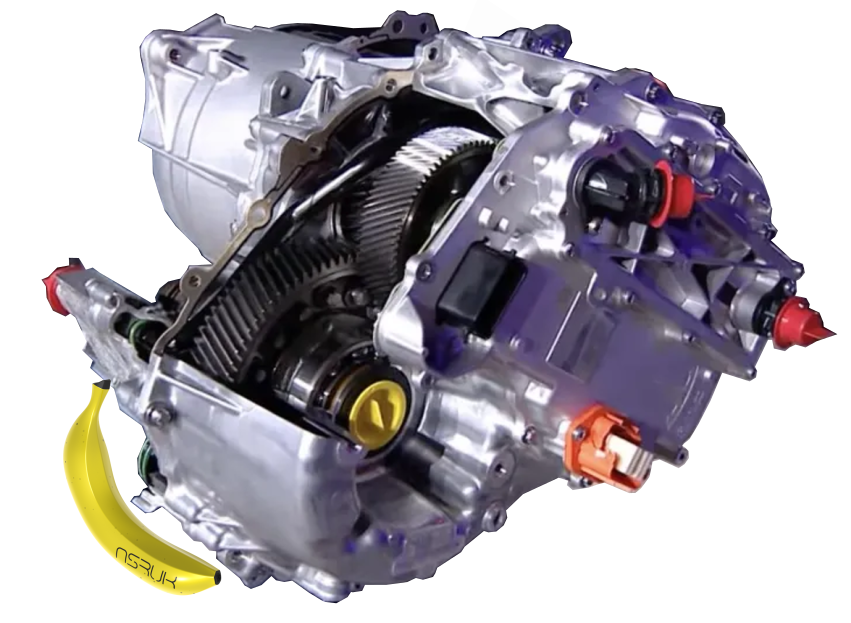Axial Flux Motors: ASRUK’s Breakthrough Solution for High-Efficiency Electric Vehicles
The rapid global shift toward sustainable transportation demands innovative solutions to improve the efficiency, power density, and reliability of electric vehicles (EVs). Leading this transformation, ASRUK’s axial flux motor technology offers a compact, efficient, and eco-friendly alternative to traditional radial flux motors, positioning itself as a game-changer in the EV market. By rethinking motor design and functionality, ASRUK’s axial flux platform is set to drive forward a new era of high-performance EVs. Here’s how ASRUK is revolutionizing the industry with axial flux technology.
Understanding Axial Flux Motors and ASRUK’s Innovation
Axial flux motors represent a radical shift in electric motor design. Unlike traditional radial flux motors, which produce a magnetic field around the rotor, axial flux motors generate a magnetic field that flows parallel to the motor’s axis. This design change enables axial flux motors to achieve higher power density and improved efficiency within a compact structure, making them ideal for applications where weight, space, and performance are critical.
Key Advantages of ASRUK’s Axial Flux Motors
- High Power Density at Low Speeds
Axial flux motors provide superior torque—up to two to three times more than comparable radial flux motors. This results in higher power density that can be achieved at significantly lower motor speeds, making these motors especially suited for EVs where high torque and efficiency are essential. Lower-speed operations also contribute to less wear and tear on vehicle components, reducing maintenance needs and boosting long-term reliability. - Efficient Design Reducing Material Use
Axial flux motors are lighter and more compact than traditional motors, achieving comparable or better performance while using up to 30% less iron and copper. This not only makes them an eco-friendlier option but also reduces the cost of raw materials and manufacturing. The compact design of ASRUK’s motors enables easier integration into a variety of vehicle architectures, making it a versatile solution for EV manufacturers aiming to optimize their designs. - Extended EV Range Through Increased Efficiency
Range is one of the top considerations for EV customers. By optimizing powertrain efficiency, ASRUK’s axial flux motors minimize energy losses, converting more battery power into propulsion and extending the vehicle’s range on a single charge. Additionally, thanks to the high torque output, EVs using ASRUK motors require fewer or no reduction gears at the wheel. This reduction in gearing stages can improve drivetrain efficiency by 7-12%, translating to an extended range and lower energy consumption. - Compact, Flexible Design for Optimal Space Utilization
The axial, pancake-like structure of ASRUK’s motors offers greater design flexibility, allowing them to be integrated in areas unsuitable for bulkier radial motors. For instance, manufacturers can place ASRUK motors directly in wheel hubs or other compact spaces, freeing up space within the vehicle for additional batteries, cargo, or safety features. This adaptability is crucial for automakers working to maximize interior and storage space without compromising performance. - Enhanced Reliability and Lower Maintenance Needs
The high torque of ASRUK’s motors means fewer mechanical components are needed, which not only increases efficiency but also improves reliability. With fewer reduction gears and less mechanical complexity, vehicles equipped with ASRUK’s motors are subject to reduced wear, lower maintenance requirements, and longer lifespans. For both manufacturers and consumers, this means a lower total cost of ownership and a more dependable driving experience. - Reducing Vehicle Weight for Enhanced Performance
Weight is a crucial factor in EV efficiency and performance. The lightweight construction of ASRUK’s motors can reduce overall mass of drivetrain unit by up to 50% compared to conventional motor designs, improving acceleration, braking, and energy efficiency. By minimizing weight, ASRUK enables automakers to deliver EVs with enhanced performance while also improving range, lifespan, and reducing chassis wear. - Maximizing Versatility for Multiple Vehicle Types
Weight is a crucial factor in EV efficiency and performance. The lightweight construction of ASRUK’s motors can reduce overall mass of drivetrain unit by up to 50% compared to conventional motor designs, improving acceleration, braking, and energy efficiency. By minimizing weight, ASRUK enables automakers to deliver EVs with enhanced performance while also improving range, lifespan, and reducing chassis wear.
ASRUK’s Vision for a More Sustainable and Efficient Electric Future
ASRUK’s pioneering axial flux motor technology marks a significant step forward in the evolution of electric vehicles across various sectors. Beyond just electric cars, ASRUK’s motors cater to a broad range of electric mobility needs, from scooters and motorcycles to heavy-duty commercial vehicles—anywhere that demands high power density, efficient performance, and compact integration. By combining high torque density, superior efficiency, and material efficiency, ASRUK’s axial flux motors redefine what electric motors can achieve for all types of electric vehicles.
For manufacturers, ASRUK’s technology unlocks new possibilities for creating lighter, simpler, and more energy-efficient electric vehicles. This innovative motor design reduces overall drivetrain complexity, supports extended vehicle range, and enables versatile placements in compact spaces—all while using fewer raw materials. For users, this means a more sustainable, durable, and low-maintenance vehicle, delivering a reliable, high-performance driving experience with a reduced carbon footprint.
As demand for efficient and sustainable mobility accelerates, ASRUK’s axial flux motors are positioned to lead a transformation across the electric transportation industry, providing unmatched power density, sustainability, and versatility for the future of clean energy vehicles.


